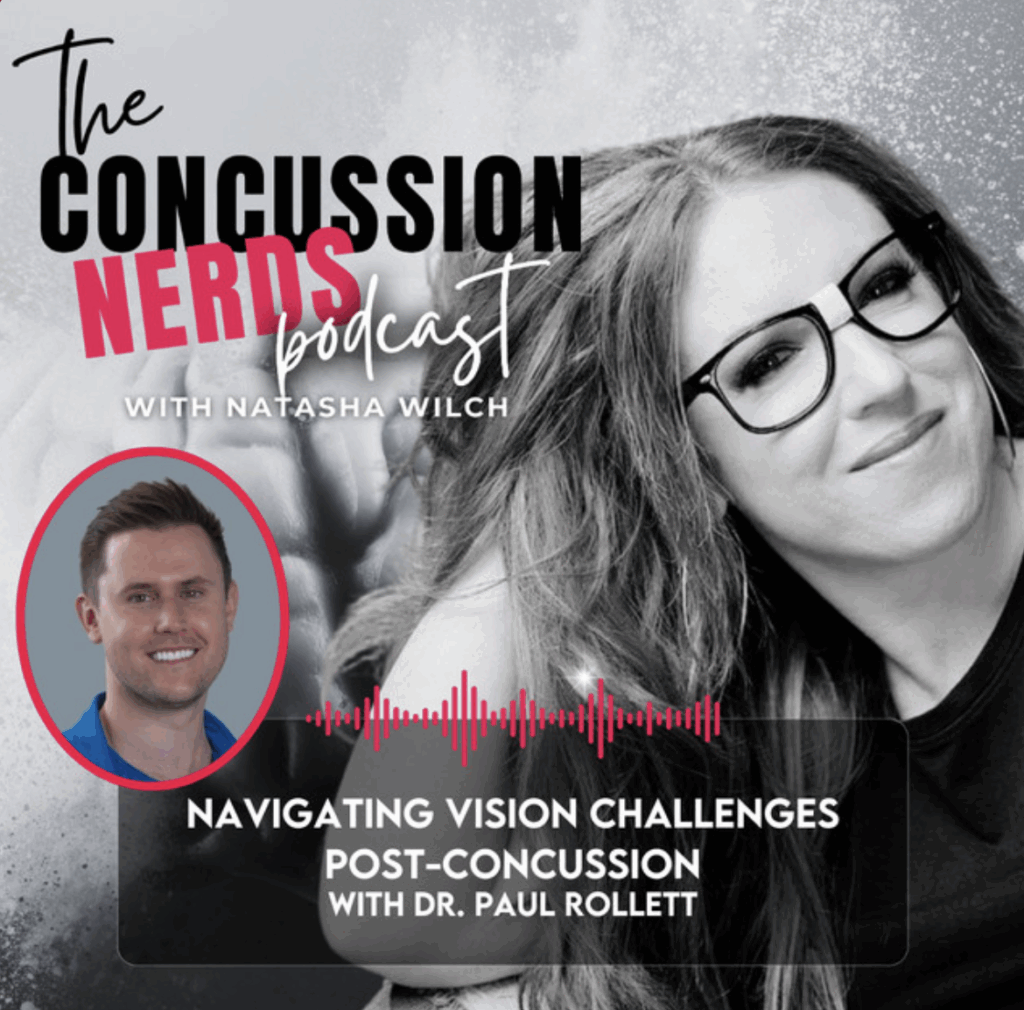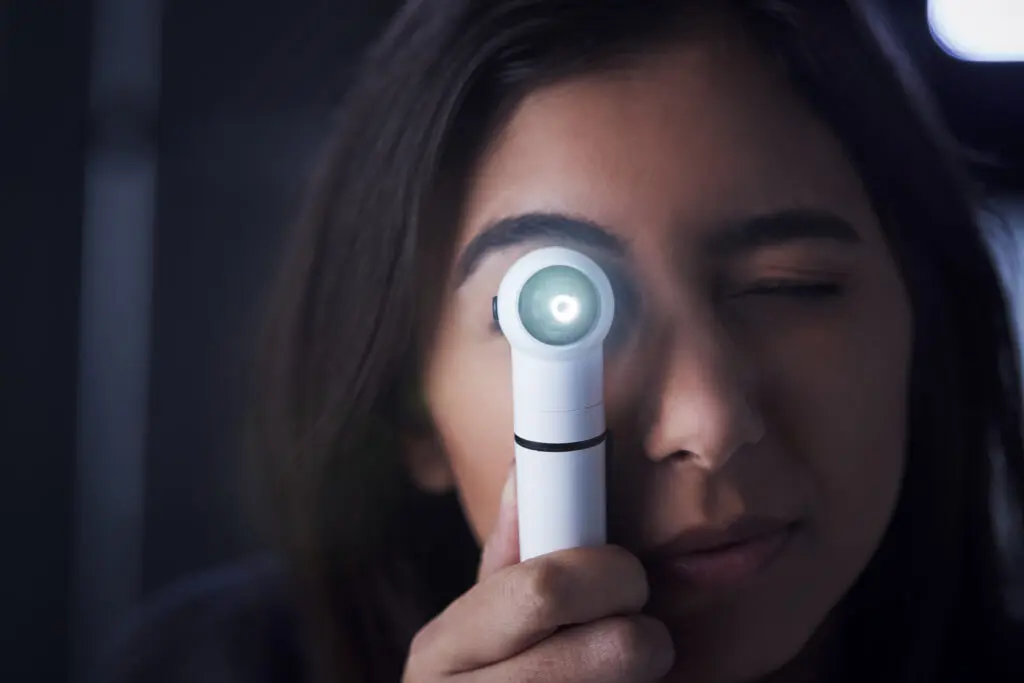Migraines and light sensitivity can feel overwhelming – whether it’s the harsh fluorescent lights at work, glare from computer screens, or bright sunshine outdoors. Many people describe the experience as a constant visual assault, which can quickly trigger headaches, dizziness, or a migraine attack. Over the years, a number of specialized filters and lens tints have been developed to help reduce these symptoms. In this month’s blog, we’ll explore three of the most well-studied options – FL-41, Avulux, and light blue tinting – and then look at how task-specific prescriptions and precisely measured prism corrections can be paired with these filters for even greater relief.
Why Filters and Tints Can Help
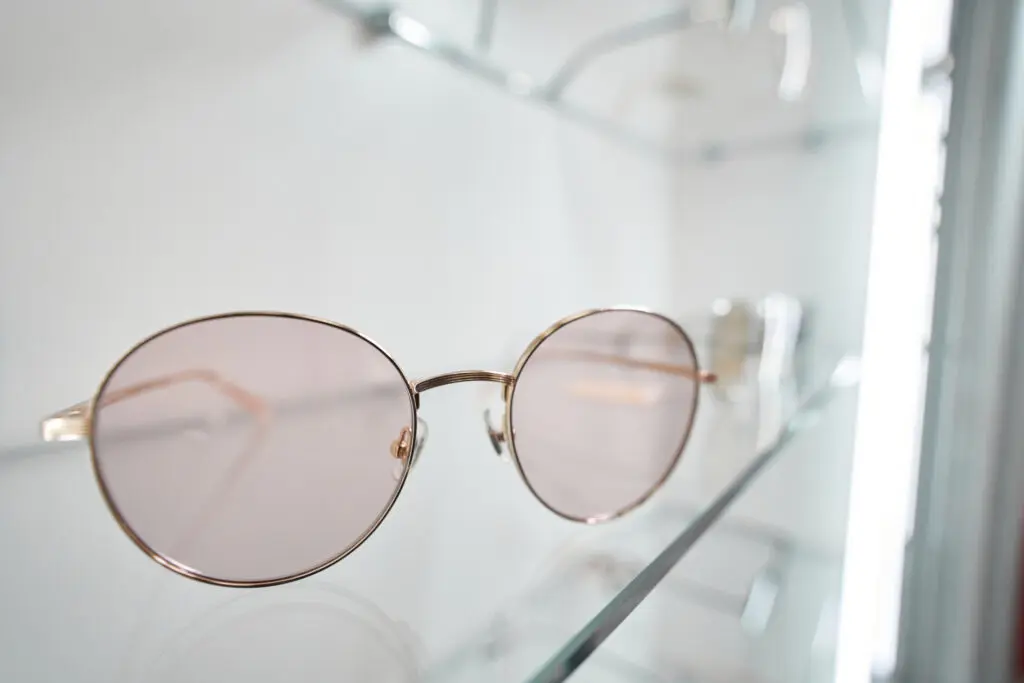
Light sensitivity (photophobia) is a common feature of migraine, concussion, post-traumatic vision syndrome, and even some ocular surface conditions. The visual system is wired directly into brain regions that regulate pain perception, so when certain wavelengths of light bombard the eyes, they can overstimulate sensitive neural pathways. Filters work by selectively blocking those problematic wavelengths while letting in more comfortable, less irritating light. The result is often a calmer, more soothing visual experience.
FL-41: The Classic Rose-Colored Tint
FL-41 is one of the earliest and most researched filters for migraine and photophobia. Developed in the 1990s, this rose-colored tint blocks a significant portion of blue-green light around 480nm – a wavelength shown to be especially provocative in migraine sufferers.
Patients who benefit from FL-41 often describe:
-
Less glare from fluorescent lighting.
-
Improved tolerance for screen time.
-
Reduction in headache frequency and severity.
It’s been studied in conditions ranging from migraine to benign essential blepharospasm and has become a go-to recommendation for many neuro-optometrists and neurologists.
Limitations
While FL-41 is widely available, the exact quality and consistency of the tint can vary depending on where lenses are made. Some patients find that it darkens the overall field too much indoors, while others report that the color shift (a distinct pink hue) is cosmetically distracting. Still, for many people it provides a meaningful step forward.
Avulux: The New Science-Backed Filter
Avulux lenses represent a newer and potentially more refined approach. Rather than simply adding a tint, Avulux lenses are manufactured with a multilayer filter that is injected directly into the lens material. This allows for very precise wavelength control.
How It Works
Avulux selectively blocks the “painful” bands of light – specifically 480nm (blue) and 580nm (amber/red) – while allowing in a narrow range of green light, which has been shown in studies to have a calming, even therapeutic effect for migraine patients. Instead of darkening the entire visual field, Avulux preserves brightness and color perception while cutting out the wavelengths most likely to trigger symptoms.
Many patients find Avulux lenses:
-
More comfortable for long-term, all-day wear.
-
Easier to adapt to cosmetically (no heavy color shift).
-
More effective for reducing migraine frequency than traditional tints.
Limitations
Cost is often the main consideration. Avulux tends to be more expensive than traditional tinted lenses, whether in clip-on form or built directly into prescription glasses. However, for individuals struggling with significant light sensitivity, the added precision and comfort can make it a worthwhile investment.
Light Blue Tinting (10-30%): A Simpler Option
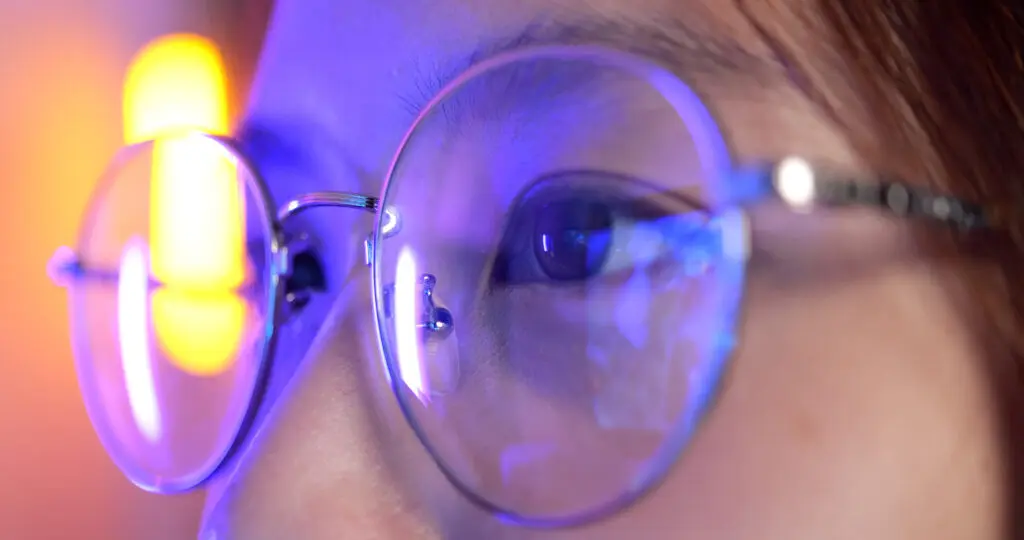
Not every patient needs or tolerates heavy filtering. For some, a light blue tint can provide enough relief, especially when glare and screen discomfort are the main triggers. Blue tints reduce overall brightness, cut reflections, and soften harsh contrast.
Best Situations for Blue Tints
-
Screen-based work: Some individuals find light blue tints reduce digital eye strain without overly darkening their lenses.
-
Cosmetic preference: The subtle blue hue is often considered more stylish and less noticeable than rose or amber options.
-
Milder cases: For patients who are light sensitive but not experiencing chronic migraines, a blue tint may strike the right balance.
Limitations
Light blue tints are not as scientifically targeted as FL-41 or Avulux. They do not specifically block the “painful” wavelengths linked to migraine activity, so results can be more variable.
The Power of Combining Filters with Prescription Accuracy
While filters and tints are important, they are rarely the whole solution. For patients with migraines and light sensitivity, it’s equally critical to ensure that the base prescription is accurate and optimized for their specific tasks and visual demands.
Task-Specific Prescriptions
A person may have one prescription that works for distance and general use but needs a slightly different prescription for computer work, reading, or driving. These “task-specific” glasses can reduce strain by:
-
Minimizing over-focusing demands at near.
-
Providing sharper intermediate clarity for screens.
-
Reducing the need for constant accommodative effort.
When these task-specific prescriptions are combined with filters like FL-41 or Avulux, patients often report dramatic improvements in comfort and function.
The Role of Prism Correction
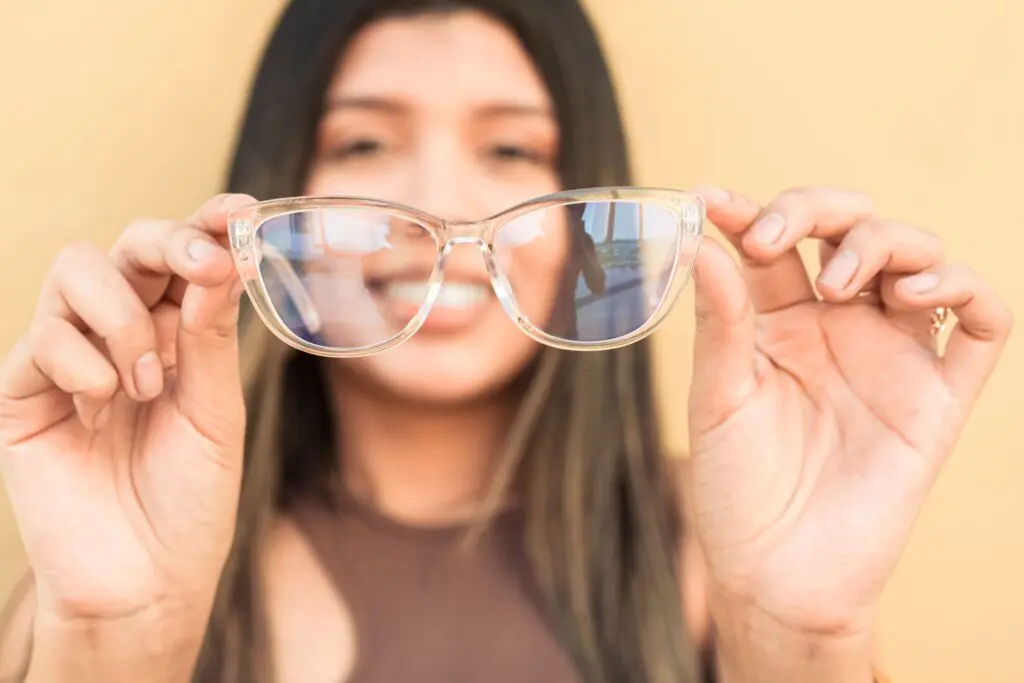
Another overlooked factor is ocular alignment. Even small misalignments between the two eyes can force the visual system to work harder, creating strain and triggering headaches. Prism correction in glasses is used to gently realign the images seen by each eye so that the brain can fuse them effortlessly.
For patients with migraines, concussion, or vestibular issues, precisely prescribed prism can:
-
Reduce double vision and visual “swim.”
-
Decrease effort required for eye teaming.
-
Improve balance and stability in busy visual environments.
When combined with the right filter or tint, prism can transform a pair of glasses from being “tolerable” to “life-changing.” The key is accuracy – prism must be carefully measured and applied by an optometrist with experience in binocular vision and neuro-optometric care.
Finding the Right Option
Choosing the right tint or filter is highly individualized. What works for one person may be ineffective for another. A structured approach often works best:
-
Start with the base prescription – make sure the eyes are properly corrected for the tasks that matter most.
-
Layer in filters – trial FL-41, Avulux, and lighter tints to see which provides the greatest relief without overly distorting vision.
-
Consider prism – especially if there are symptoms of eye strain, dizziness, or imbalance.
Patients should work closely with an optometrist experienced in migraine and light sensitivity management to trial different combinations. Sometimes even small adjustments can lead to big improvements in daily comfort and function.
For people living with migraines, headaches, and light sensitivity, glasses can be more than a tool for clearer vision – they can be a therapeutic intervention. Options like FL-41 provide a time-tested, research-backed solution. Avulux offers cutting-edge precision with promising results, while light blue tinting gives a more subtle and accessible option. When combined with task-specific prescriptions and precise prism correction, these filters can greatly improve quality of life, reducing both the frequency and intensity of visual triggers.
The future of migraine care lies in this personalized approach – matching the right filter with the right prescription, for the right patient.
Until next month,
Dr. Paul Rollett, OD, FOVDR, FCCSO


